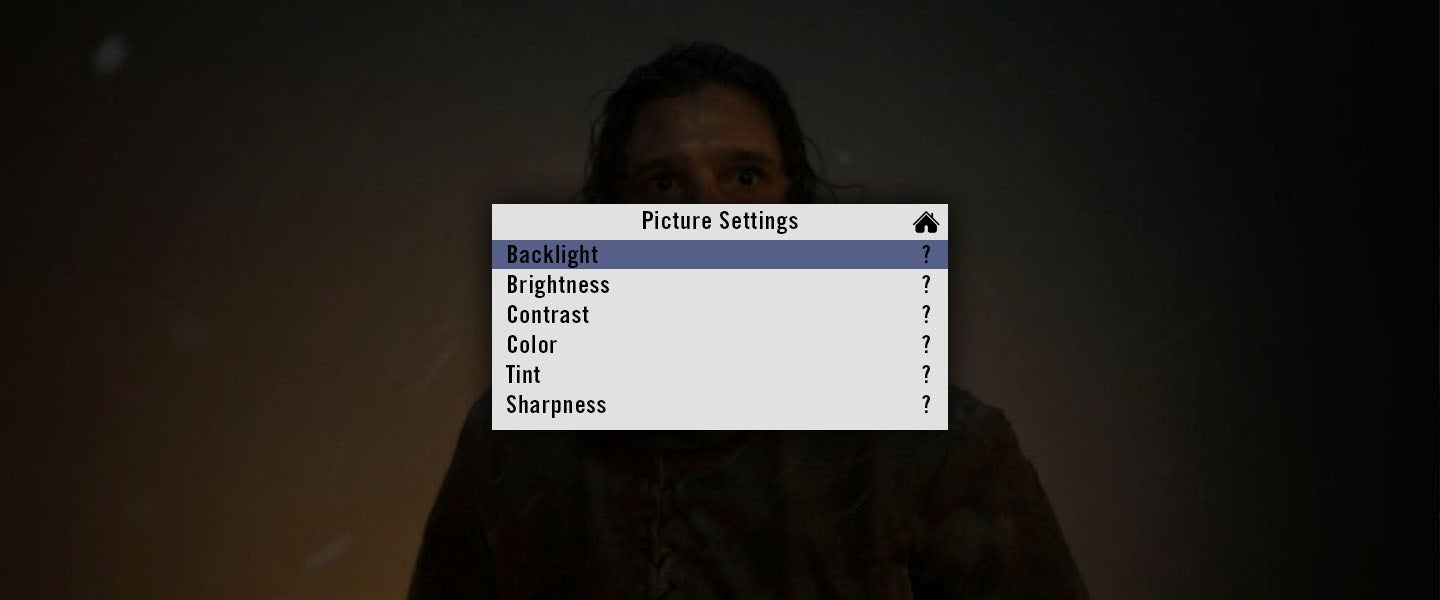Fantasy fans were devastated last Sunday when darkness and constant pixelation ruined what was supposed to be an epic Game of Thrones battle episode. Needless to say, the internet went berserk with complaints, most of which were directed at the cinematographer who shot it.
Everyone watching the Dothraki charge ? #GameOfThrones pic.twitter.com/lrmhy5IKa9
— Game of Thrones Memes (@Thrones_Memes) May 3, 2019
But the cinematographer shot right back, blaming the poor viewing quality on a combination of compression issues caused by weak streaming services, people leaving the lights on and TV settings that have never been calibrated.
Admittedly, compression problems were most likely the biggest contributor to the darkness and pixelation issues in this last episode. You see, satellite, cable and streaming providers heavily compress each Game of Thrones episode before they reach your screen. This helps make the show more accessible to the hordes of viewers, many of whom tune in with different internet speeds. Sadly, compressing also degrades the video quality, and when you combine that with an already-dark episode, the picture can be extremely dim and muddy.
The big problem here is that there’s not much you can do about compression issues. Some people argue that Amazon streams Game of Thrones at a higher bitrate (which means less pixelation) than HBO, so you could try switching over. You could also try watching later at a time when fewer people are tuning in, so your internet has more bandwidth, which might also improve the picture (although by doing that, you’re basically begging to have the entire episode spoiled for you by random dumbasses tweeting the entire plot as it happens — Twitter, why do you ruin EVERYTHING).
Meanwhile, IT expert Zack Gaudet says you’re better off using a standalone streaming device, like Apple TV or Roku, rather than native applications on your television. “The reason being that TV has to utilize processing power for the stream and the quality of the image,” he explains. “Having an additional device to handle the streaming aspect allows the TV to only worry about picture quality.” Gaudet also mentions that plugging an ethernet cable into whatever device you’re using can help provide a more consistent streaming quality.
Long story short, streaming kinda sucks and there’s not much you can do about it. The two things you can change to improve your Game of Thrones viewing quality, though, are ambient lighting and your TV settings. Fixing the lighting problem is simple: Turn off every light that might leak into the room you’re watching from, and close the curtains or blinds on your windows. Cool, fixed: Now that screen pops (and your eyes probably water, but what the hell). Updating your TV settings, however, can be a little trickier, which is why I asked for advice from Gaudet, who says “a personal hobby of mine is to change the settings on my TV before every Game of Thrones episode.” Here’s what he suggests…
Look Up the Recommended Settings for Your Specific Device
This might sound like a lot of work, but it really isn’t. Gaudet says this is the only real way to get the most out of your TV and recommends simply heading to this website, typing in your model and voilà: You’ll be provided with a simply-and-easy guide for tuning up your television.
Set HDR to Auto
It’s always a good idea to have HDR set to automatic on your TV. When activated, HDR essentially brings out more detail in especially bright and dark areas of the picture, which would obviously help out with last weekend’s ultra dark episode.
Don’t Crank Up the Brightness
This might seem like a quick fix for an episode that’s too dark, but Gaudet says “this tends to wash out the picture instead of making it more visible.” He recommends turning the backlight up instead. “Backlight should be what you’re raising to get a brighter picture, not the actual brightness,” he explains.
Keep the Black Levels Modest
Similar to brightness, putting your black levels too high or low can cause a washed out image. “Too dark, and you’ll make the entire image have too much contrast,” Gaudet explains. “Too light, and you’ll wash out the blacks.” He says the perfect middle ground is a matter of personal preference, but the lesson here is to keep those levels somewhere in the middle.
Now, once again, I want to emphasize that the real problem with last weekend’s episode was poor compression that had to do with the streaming quality, a problem that you really can’t do much about. So while tweaking your TV settings and blocking out ambient light might make this next episode a little bit clearer, Gaudet says you should expect some image problems nonetheless. “Streaming HBO? You’re going to have artifacts [transmission issues] and bad gradients, especially in the blacks,” he warns, adding that cable is usually a better bet.
All of which is to say, if you really want the ultimate Game of Thrones viewing experience, you’ll just have to wait until it comes out on Blu-ray. “That’s when it’ll look fantastic,” Gaudet confirms. And all you need to do in the meantime is abandon the internet entirely, wear a blindfold, stick gherkins in both ears and walk around screaming “LALALALALALALALALALALA” for the next five months or so.
It’s a small price to pay.

